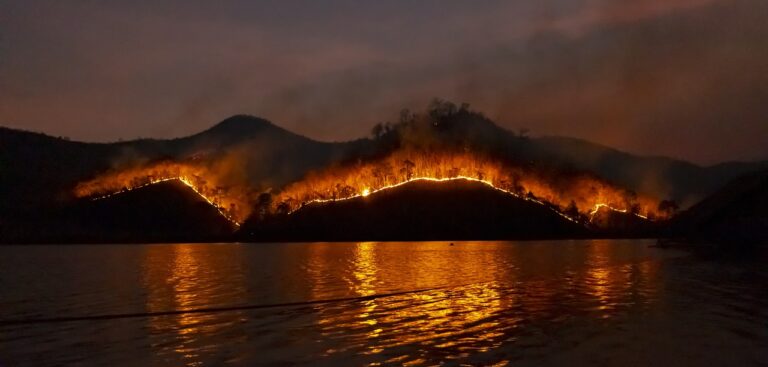In 2006, the Tripod Complex Fire in north-central Washington State burned more than 175,000 acres – more than three times the size of Seattle. Yet while considered severe at the time, even larger wildfires in 2014, 2015 and 2021 have since dwarfed that forest fire. Research shows that severe wildfires like these were much rarer in the western USA and Canada prior to the late 20th century.
“Fire exclusion policies for much of the 20th century yielded many dense forests with largely uniform composition,” said Susan Prichard, a research scientist with the University of Washington School of Environmental and Forest Sciences. “By the turn of this century, we had mature and densely treed, multilayered forests with high fuel content – and as a result, large, destructive wildfires can ignite and spread more easily. There’s simply more to burn across large landscapes.”
Prichard, colleagues from the US Forest Service’s Pacific Northwest Research Station and consulting fire ecologist Robert Gray have created a modeling tool that will enable managers and policymakers to imagine and realize a future where such large, severe wildfires are once again rare events, even under climate change.
The tool, known as REBURN, can simulate large forest landscapes and wildfire dynamics over decades or centuries under different wildfire management strategies. The model can simulate the consequences of extinguishing all wildfires regardless of size, which was done for much of the 20th century, or of allowing certain fires to return to uninhabited areas. REBURN can also simulate conditions where more benign forest landscape dynamics have fully recovered in an area.
In a pair of papers published June 30 and July 31 in the journal Fire Ecology, the team applied REBURN to the region in north-central Washington where the 2006 Tripod Complex Fire burned. Simulations showed that setting prescribed burns and allowing smaller wildfires to burn can yield more varied and resilient forests over time. Such forests are made up of forest condition ‘patches’ of different sizes and shapes, and all at different stages of recovery from their most recent fire. Patches that recently burned acted as ‘fences’ to the flow of fire for at least the next 5 to 15 years, preventing wildfires from spreading widely. REBURN simulations showed that a forest landscape comprising 35% to 50% fence areas had far fewer large-scale and damaging wildfires.
“We found that having a more complex forest environment – in terms of tree age, composition, density, fuel content – makes it harder for large fires to spread and become severe,” said Prichard.
Research has shown that before large-scale European colonization of the area, smaller wildfires shaped forests in north-central Washington and elsewhere in the Pacific Northwest. The Methow people and other tribes in the region actively set fires through cultural burning practices. Aerial photos show that, as recently as the 1930s, forests in north-central Washington had a ‘patchwork quilt’ structure that kept large wildfires from forming easily.
REBURN is currently being adapted to simulate forest development in the vast forests of southern British Columbia and northern California, including regions recently hit by wildfires and those culturally burned by Indigenous people. But knowing when and whether to allow a small fire to burn in an uninhabited region is no easy task, since fire managers must protect people, homes and livelihoods. The team hopes ongoing research will help refine the model and the insight it can provide to modified forest management strategies.



